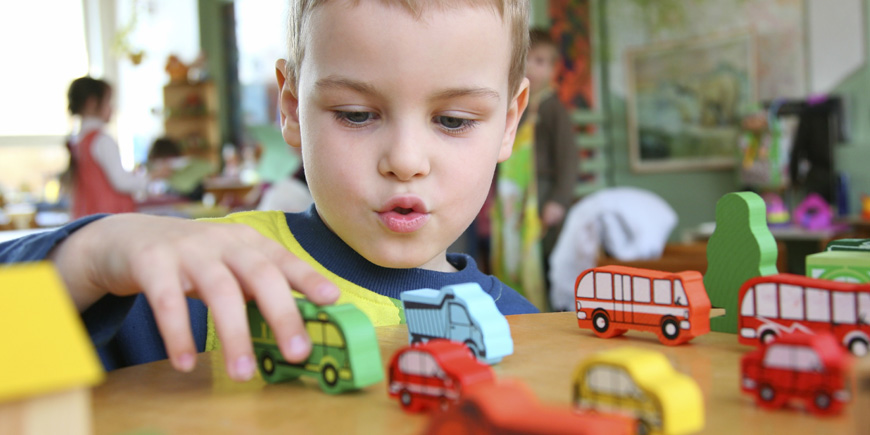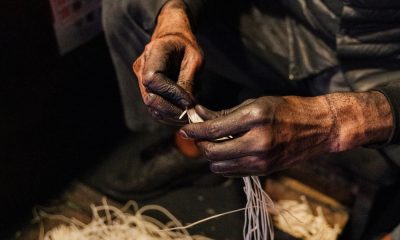Kids & Family
Dogs making a difference
For Mistuhiro Kitazawa, training dogs to help disabled people is motivated by a love of the animals as much as a desire to help people.
Seven years ago, Mitsuhiro Kitazawa decided he wanted to work with dogs. He could have become a vet or opened a grooming salon. But deciding that he wanted to do something more beneficial, and fascinated by the co-dependant relationship between dog and man, he founded the Hyogo Service Dog Association (HSDA), whose mission is to train dogs to assist people with physical disabilities.
Oz, a formidably large black Labrador jumps to his feet at the sight of his bright red vest. It’s working time at the HSDA centre in Nishinomiya.
“We only train labradors and retrievers as service dogs,” Mitsuhiro explains. “We need dogs with enough strength, height and weight to be able to do things like open doors, and on top of that labs are naturally disposed to living with people, as they are also generally calm by nature.”
And being calm is essential as, despite being working dogs, much of their day is spent waiting to be given a command to perform a very short task, like fetch a ringing telephone or pick up a dropped coin.
“On any given day a dog may only be asked to do ten things, and so a dog that can’t keep still or constantly needs to be active just isn’t suitable,” says Mitsuhiro. “Neither is one that is too timid or afraid of loud noises. For every ten dogs we start training only two or three will make it into actual service.”
Dogs begin training at a year old, and it takes between one and two years before they are ready to be placed with a handler.
“Because the people who take the dogs all have different physical disabilities we need to train each dog to match its handler,” Mitsuhiro says. “This training will continue throughout the dog’s eight-to-ten year career as circumstances change; a disabled person’s condition may deteriorate so the dog needs to learn new tasks, or it may improve due to rehabilitation so skills may be adapted and the dog can do something else.”
The HSDA also provides their client’s dogs with regularveteri- nary check ups and treatment as well as counselling and support sessions with the handlers.
For a person with physical disabilities, there are obvious everyday benefits to having an assistance dog. The dog helps them open and close doors with ease, and picks dropped items up from the floor. But there’s also the independence that the dogs bring. With a dog by their side, owners can go the post office or convenience store without having to ask a friend or family member for help.
Mitsuhiro explains: “When someone becomes disabled through an accident or stroke they can become very focused on themselves and the things they can no longer do, this of course can lead to depression and anxiety. However, when someone has a dog their focus shifts, now they must think about the dog as well. The person needs the dog, but the dog also relies entirely on the person for its wellbeing. The disabled person has a responsibility to look after the dog and so it’s a very two-way relationship, it’s more like apartnership. The result is that the person discovers a whole new motivation for life.”
The HSDA receives only minimal funding from local government, the rest comes through public donations. Finding a corporate sponsor is difficult, as with only five assistance dogs currently working in the Hyogo area a lack of visibility leads to a lack of awareness. Theassociation employs four full-time trainers and staff, and has a list of around 70 volunteers whose main task is collecting donations from outside public events or busy stations.
“It costs between seven and eight million yen in total to train each dog, so our reliance on public generosity is rather heavy,” Mitsuhiro adds.
Oz sits, bright-eyed, beside full-time trainer Nozomi Ido in a wheelchair, tail wagging across the floor as he waits for a command.
“Oz! Keitai!” The great black Lab leaps up and begins scanning the room looking for the mobile phone. Finding it on a table, he stands on his hind legs to reach it before bringing it to me by mistake. I can’t help but think he’s showing off. “Oz!” Nozomi reminds him, but he’s too excited by having someone watching him work and it takes several orders before the phone is delivered. Well, he is still in training and on a second run he gets it perfect. Then, in true assistance dog form, after receiving his reward of loving praise from Nozomi, he flops down on the floor to snooze and await the next command.
“Bringing a phone is one of the most important commands as in an emergency, like a fall, being able to call for help quickly could save someone’s life,” Nozomi says.
Oz looks very pleased with himself as he returns to his sport beside the chair. For a dog, work and play are the same thing. There’s no difference for them in fetching a phone and fetching a ball, other than that they can’t then lie on the floor chewing the phone.
“Oz! Door!” Oz grabs a cloth tied to the handle of a rather solid-looking sliding wooden door and pulls it open with surprising ease so that the wheelchair can roll through. “Oz! Reizoko!” This time he yanks open the fridge door, fetches a bottle of water from inside and delivers it to Nozomi. “Oz! Push!” And the fridge is firmly closed with Oz’s ample snout pressed against a mark on the correct side of the door.
“Some of the commands the dogs are taught to respond to are given in English,” Mitsuhiro explains. “Often the sounds of the English commands are shorter and clearer than many in Japanese, and so easier for the dogs to learn. It also reduces the chances of a dog being confused by hearing someone else talk, which isn’t a command.”
It seems the dogs relate to their commands by the situation they are in. Mitsuhiro tells me that if a dog is in front of the door and the command ‘reizoko’ is given the dog will open the door before him, not run to the fridge.
It’s time for Oz to continue his training on the street where the distractions of people, other dogs and traffic will put him further to the test. But before he goes out he needs to answer the call of nature. This unavoidable requirement is another dilemma a dog handler who has disabilities must deal with, as they might well be living in an apartment with no garden, and may also be unable to constantly take their dog to the park down the street where it can cock its leg. The problem, however, is cleverly solved; a kind of diaper pouch is placed in a net with a handle and held under Oz in the appropriate place. This well-trained dog (which must be the envy of many parents with small children) then pees on command, and the diaper can then be disposed of in the toilet.
Ablutions completed, Oz backs slowly through the front door with Nozomi’s wheelchair in front of him as trained, rather than trying to pull her after him and, walking obediently beside her, they head off down the street and into the neighbourhood. A true example of man’s best friend.
[box]For anyone wishing to help the HSDA out, volunteer donation collectors are always needed. A reasonable command of Japanese is required and your reward, aside from that warm fuzzy feeling you get from doing something good to help others, is that you get to hang out with gorgeous dogs like Oz.
• Email: info_hsda@ybb.ne.jp
• www.kaijyoken.net[/box]














